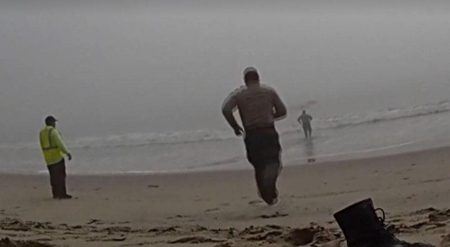National Guard Shooting Sparks Renewed Concerns Over Afghan Evacuation Vetting
The recent ambush shooting of two National Guard members near the White House has reignited a heated debate about the vetting procedures used during the 2021 evacuation of Afghan refugees. Former FBI special agent Nicole Parker described the screening process during the chaotic withdrawal as essentially a “free-for-all,” raising serious questions about national security protocols. The incident has become a focal point for critics who warned that inadequate screening could have dire consequences. With both National Guard members still in critical condition, the attack has transformed abstract policy concerns into a painful reality, prompting officials to reexamine how tens of thousands of Afghans were admitted to the United States in a matter of weeks.
The rushed evacuation following the Taliban takeover created significant challenges for proper vetting, according to multiple reports and whistleblower accounts. In 2022, Senator Josh Hawley revealed that a whistleblower had identified 324 individuals who entered the U.S. despite having “derogatory information” in their backgrounds. This revelation came alongside a damning Department of Homeland Security Inspector General report, which concluded that the department failed to properly vet Afghan evacuees, creating potential security risks. The operation’s scale was unprecedented—more than 70,000 people were evacuated in a short period—with screening teams processing individuals at a pace that made thorough vetting nearly impossible. Jason Pack, a crisis communications expert, acknowledged that while the evacuation was a massive humanitarian operation, it “carried unavoidable risk” due to scattered records, incomplete databases, and the sheer speed of processing.
The mechanics of the vetting breakdown appear to have stemmed from multiple factors, including an expedited process that bypassed normal procedures. Under Operation Allies Welcome, the Department of Homeland Security used humanitarian parole to rapidly process thousands of Afghans, circumventing the more rigorous special immigrant visa and refugee programs that typically take years to complete. Parker claims that FBI agents working with Department of Defense contractors in foreign countries attempted to screen Afghans, but the State Department repeatedly overrode security concerns. “There were individuals that were not being recommended to come to the United States, yet they were being overridden by the Biden State Department,” she stated. The Inspector General’s investigation found that temporary staging bases known as “lily pads” in countries like Germany, Qatar, Spain, and Italy were understaffed and inconsistent, leading to major documentation gaps and vetting shortcuts.
The practical challenges of vetting were exacerbated by the fact that many evacuees arrived without verifiable documents or records, according to Parker. This absence of documentation left officials with nothing to check against intelligence or criminal databases. A Pentagon inspector general report from February 2022 revealed that at least 50 evacuees were brought to the U.S. despite information indicating “potentially serious security concerns,” and officials were unable to locate dozens of individuals flagged with derogatory information. Even more concerning, Hawley uncovered an August 2021 email directive instructing U.S. officials to prioritize filling evacuation flights and to “err on the side of excess,” allowing passengers to board even if their qualifications were uncertain. This urgency appears to have compromised security protocols at a fundamental level, with then-FBI Director Christopher Wray later confirming that the FBI’s Joint Terrorism Task Forces were actively investigating a number of Afghan evacuees.
The shooting suspect, Rahmanullah Lakanwal, a 29-year-old Afghan national who entered the U.S. through Operation Allies Welcome, had been living in Washington state with his wife and five children before driving across the country to Washington, D.C. U.S. Attorney for the District of Columbia Jeanine Pirro criticized the vetting process that allowed Lakanwal into the country, stating: “This is what happens in this country when people who are not properly vetted are let in.” Former Pentagon Chief of Staff Kash Patel echoed these sentiments, attributing the situation directly to “the disastrous withdrawal from the Biden administration and the failure to vet in any way, shape, or form this individual and countless others.” Their comments reflect growing concerns about whether the balance between humanitarian imperatives and security protocols was appropriately struck during the evacuation.
When confronted with these concerns in a 2021 Senate hearing, Homeland Security Secretary Alejandro Mayorkas initially claimed that “well over 99 percent” of evacuees were screened and vetted before boarding flights. However, under persistent questioning, he acknowledged he could not guarantee that standard applied in every case. When asked directly whether all Afghans were vetted before arriving in the United States, and reminded by Senator Lindsey Graham that he was under oath, Mayorkas ultimately conceded, “No. No, I can’t speak to that.” This admission suggests that even at the highest levels of government, there was recognition that the vetting process had significant gaps. The shooting of the National Guard members has transformed these procedural shortcomings from bureaucratic failures into what critics describe as preventable tragedy, intensifying calls for a comprehensive review of vetting procedures and accountability for the decisions made during the chaotic final days of America’s longest war.











